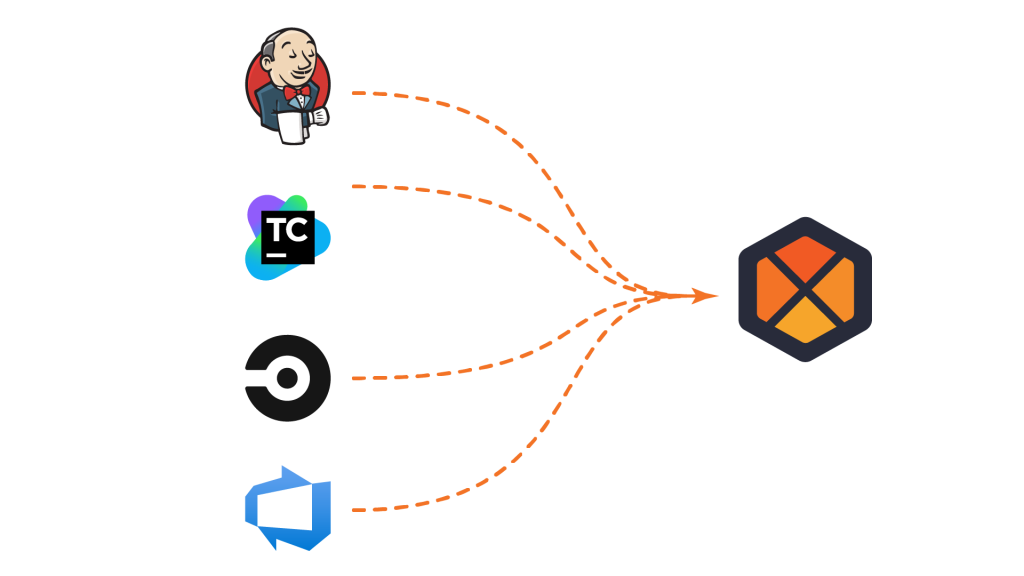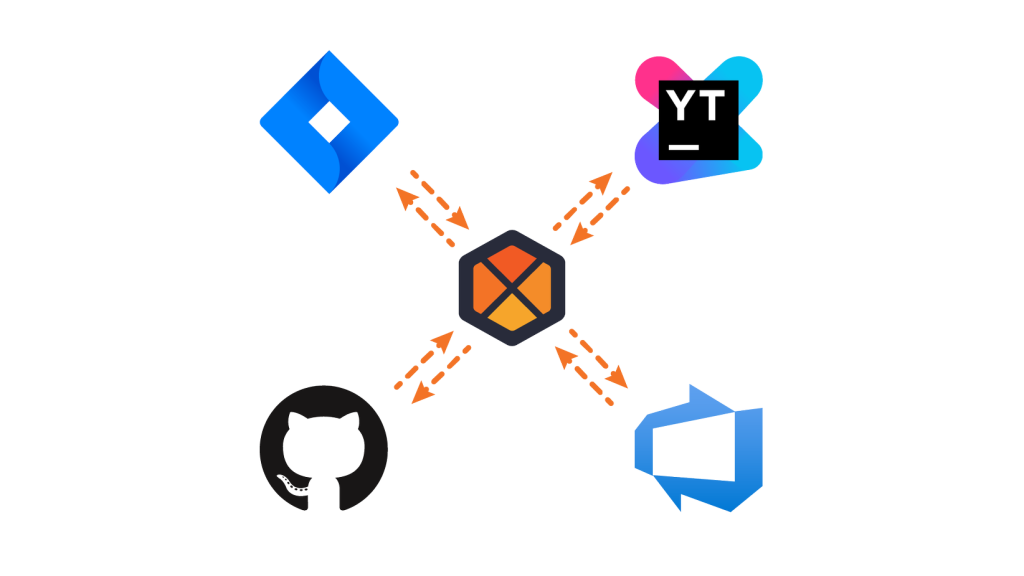
BuildMaster vs. TeamCity
BuildMaster > BuildMaster vs. JetTeamCity
Learn about the key differences. Discover how BuildMaster can be used to replace or complement TeamCity.
Build + Deploy + Release
BuildMaster is a CI/CD platform that automates builds and deployments using GUI-based editors.
Build (only)
TeamCity is a CI tool that uses Java-based build runners to automate builds and run scripts.
“Can BuildMaster replace TeamCity?”
Yes, BuildMaster can automate both build (CI) and deployment processes (CD) and be a single tool for CI/CD that helps manage release and issues.

TeamCity has a lot of features to help with complex, monolithic Java applications, including proprietary code analysis and IntelliJ Integration. But in many cases, BuildMaster can build and deploy these kinds of applications—and much more.
Migrating from TeamCity to BuildMaster is relatively easy, but you can also integrate tools or our professional services to help with the migration.
“Can BuildMaster integrate with TeamCity?”
Yes, you can import build artifacts from TeamCity, Jenkins, and Azure DevOps, then deploy them consistently across different environments and targets—whether TeamCity is accessible or not.

TeamCity is a powerful tool used and loved by many engineers. You can still use it to create builds and perform other tasks while using BuildMaster’s automation and pipeline features to consolidate and control everything with a simple UI.
Capabilities Comparison
Deployment is Simple with BuildMaster
TeamCity is a Continuous Integration tool and generally requires using a separate deployment tool. Technically, you could use TeamCity for deployment, but this requires creating a special “build configuration” to run a custom deployment script written in PowerShell, Python, etc.
BuildMaster was designed with deployment in mind and includes several GUI-based Deployment Script Templates that can handle many deployment targets on popular development platforms.
For complex deployments, you can write your own scripts using the low-code OtterScript, or use existing PowerShell, Bash, Python, and other scripts.

BuildMaster has GUI-based deployment templates and advanced scripting capabilities.
TeamCity requires a separate deployment tool or writing custom scripts.
Consolidate Multiple CI Servers with BuildMaster

BuildMaster can reference, import, and consolidate build artifacts from TeamCity and other CI tools like Jenkins and Azure DevOps via a user-friendly GUI.
This allows you to use BuildMaster’s powerful deployment capabilities to deploy build artifacts across different environments and stages.
As a CI tool, TeamCity does not integrate with other CI tools.
Visually Manage Releases & Pipelines
Builds must be deployed to a number of testing environments before they can go into Production. This is often referred to as the deployment pipeline and is an integral feature of BuildMaster.

BuildMaster’s deployment pipelines allow you to visualize the status of builds while creating a repeatable process with manual approvals, deployment windows, input (variable) prompts, and automated checks. You can also choose between automatic or manual promotion to the next stage.
TeamCity does not have deployment pipelines. You also can’t visualize the stages a build has been deployed to. At best, you can create multiple build configurations to run custom deployment scripts against your build.
With BuildMaster, you can see where builds are deployed and have approvals, input prompts, and auto/manual promotion for environments.
TeamCity has no deployment pipelines and no visualization of build stages, and only allows for custom deployment scripts with no manual steps.
Writing Scripts: OtterScript (BuildMaster) vs. Kotlin (TeamCity)
When it comes to writing scripts, both BuildMaster and TeamCity have a Domain-Specific Language for complex build configurations. With both products, you can also run scripts in other languages such as PowerShell or Python.
BuildMaster uses OtterScript, a low-code scripting language that can be edited both visually and in text mode. Other scripting languages are tightly integrated, making it easier to run existing scripts.
TeamCity uses Kotlin, a general-purpose programming language that requires both development expertise and extensive knowledge of TeamCity’s Kotlin extensions.

Low-code OtterScript can be edited in visual or text mode and requires no prior programming knowledge.
Kotlin has a steep learning curve that requires both programming knowledge and TeamCity extensions for effective use.
Other BuildMaster Features
TeamCity and BuildMaster are different tools and cannot be directly compared. Below are some features that distinguish BuildMaster from TeamCity.
Issue Tracker Integration
BuildMaster can synchronize issues from Atlassian Jira, JetBrains’ YouTrack, Azure DevOps (Boards), and GitHub, so you can quickly see statuses and prevent deployments when issues aren’t closed. You can also transition (e.g., close) issues as part of a deployment.


First-class ProGet Integration
BuildMaster can use ProGet’s Software Composition Analysis (SCA) to prevent vulnerable, improperly licensed, or unstable dependencies from being deployed beyond test environments.
You can also use packages or publish to ProGet feeds without worrying about Endpoint URLs or API Keys.
Discover the Full Power of BuildMaster
It’s easy to get started with BuildMaster on Windows, Linux, or a server hosted in the cloud. There is also a powerful free version that lets you try out almost all the features.